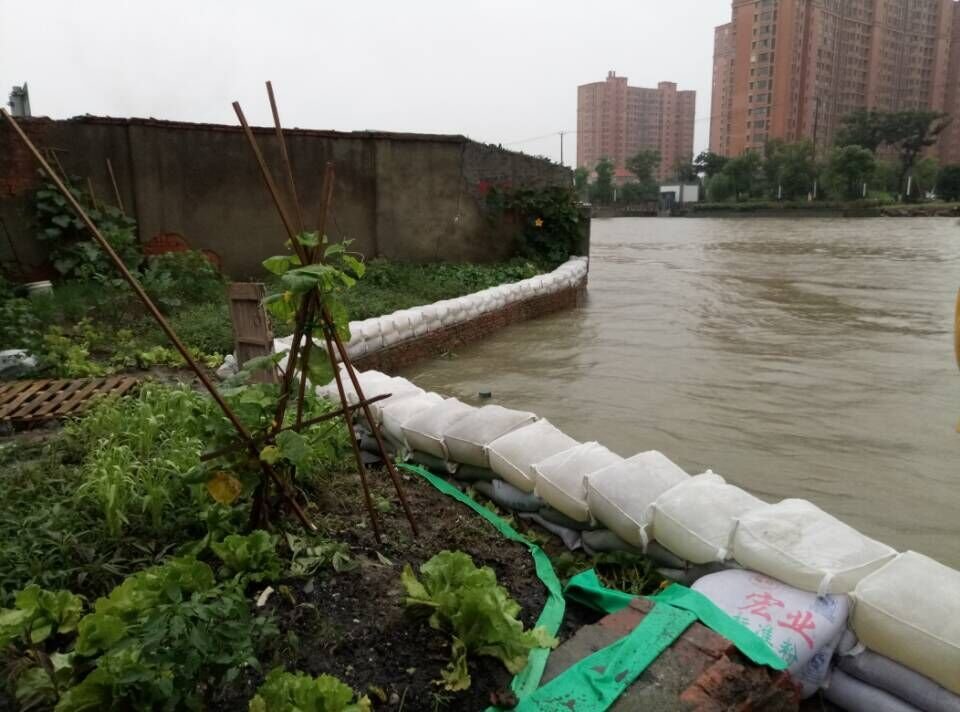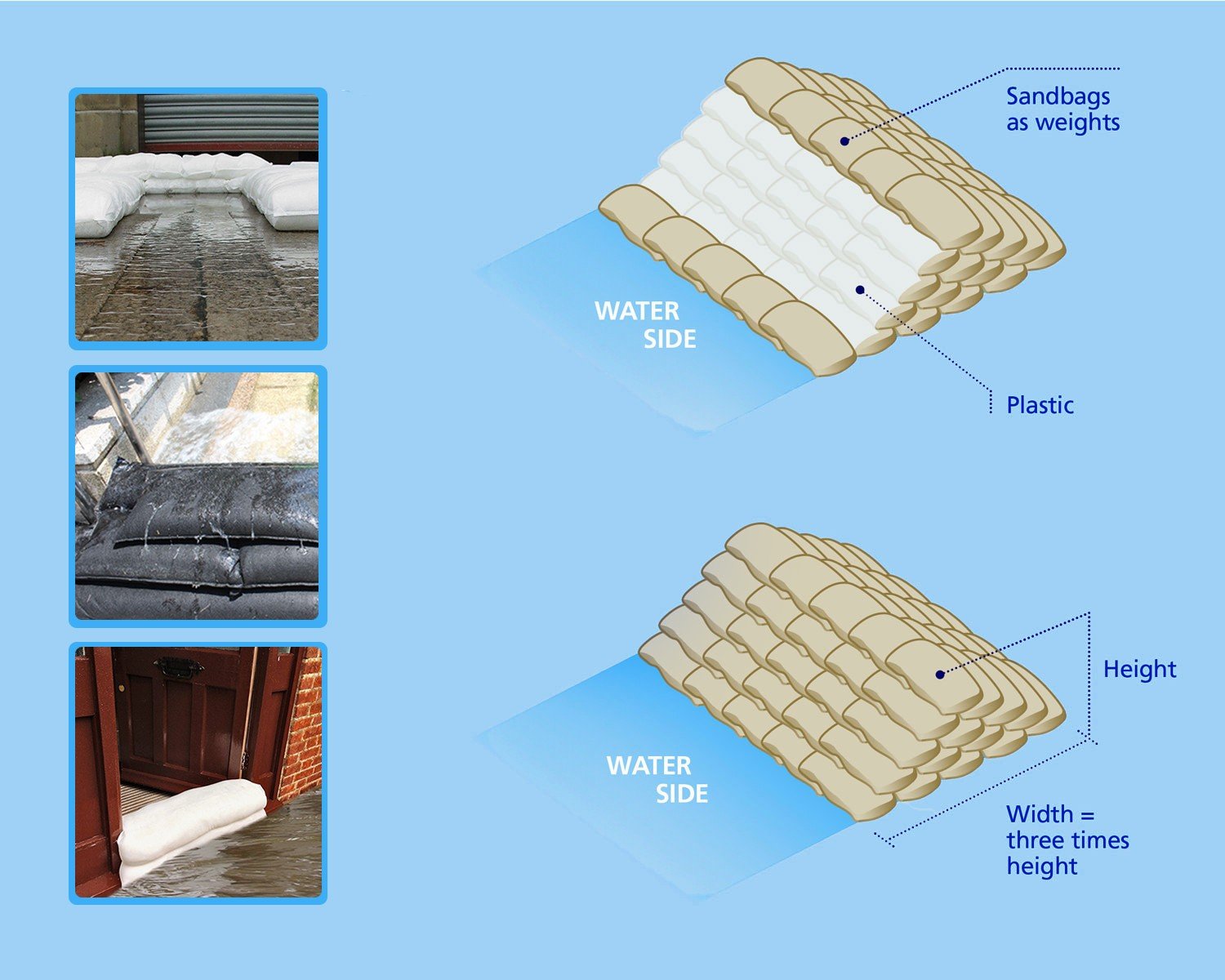Get Free Sample
1. Sandbags
Sandbags are traditional flood barriers made from materials such as burlap (jute) or woven polypropylene, and they are filled with sand to provide weight and stability. They are primarily used for temporary protection of buildings and infrastructure against flooding. Sandbags are cost-effective, highly flexible, and easy to stack, allowing them to be built into barriers or walls that can be shaped to fit various terrains. However, they require on-site filling and substantial manual labor, and they do not provide a completely water-tight seal, which can limit their effectiveness in certain flooding scenarios.
2. Inflatable Flood Defense Bags
Inflatable flood barriers are constructed from durable rubber or synthetic materials and use air inflation to create a protective wall or barrier. They are designed for rapid deployment in emergency situations, making them ideal for immediate flood response. These barriers are lightweight, compact, and easy to store and transport, allowing for quick setup and inflation when needed. However, they are more expensive than traditional sandbags and require reliable inflation equipment. Their effectiveness depends on their durability and resistance to punctures or tears.
3. Polyethylene Flood Defense Bags
Made from high-density polyethylene, these barriers can be filled with materials or self-inflating, making them suitable for both temporary and long-term use. They are ideal for controlling water flow and protecting structures over varying durations, from short-term to extended periods. These barriers offer strong resistance to water and weather conditions, are durable, and generally easy to maintain. They are often more resistant to rot and decay than traditional sandbags. However, they may not be as flexible as sandbags and can be more expensive. Additionally, some types might require professional installation or setup.
3. Self-Expanding Flood Defense Bags

These barriers utilize water or other liquids to automatically expand and form a barrier when deployed, making them ideal for emergency situations where rapid setup is crucial. They quickly form a protective line when exposed to water. The main advantages include fast and easy deployment without the need for additional tools or equipment, as they expand automatically to form a barrier. However, once expanded, these barriers can be difficult to move or adjust and may have limitations in terms of height and length compared to other types.
5. Composite Flood Defense Bags
Made from a combination of materials such as fibers, plastics, and rubber, these barriers offer enhanced strength and durability. They are designed for demanding applications where higher protection levels are required, including commercial and industrial settings. The primary advantages include superior protective performance and resistance to extreme conditions and heavy use. However, they are more expensive compared to simpler solutions and may require more complex installation. Additionally, they are not as easily adaptable as some other types.
6. Eco-Friendly Flood Defense Bags
Constructed from biodegradable or recycled materials, these barriers aim to minimize environmental impact. They are appropriate for areas where reducing environmental footprint is a priority, such as natural reserves or sensitive ecological zones. The advantages include being environmentally responsible, reducing pollution, and supporting sustainability, as they are often made from renewable resources. However, they may not always match the performance and durability of traditional materials, can be more expensive, and are less readily available.
7. Modular Flood Defense Bags
Composed of interlocking modules, these barriers can be adjusted in length and height to fit specific needs, making them versatile and adaptable for various scenarios where barriers need to be customized or scaled according to the flooding situation. The advantages include high flexibility, the ability to adjust and expand as needed, and suitability for a wide range of environments and flood scenarios. However, they come with a higher initial cost and potentially complex installation and configuration, requiring careful planning and setup.
Based on the characteristics and practical applications, Sandbags and Self-Expanding Flood Defense Bags are the two most commonly used flood defense solutions. Sandbags are favored for their simplicity, cost-effectiveness, and widespread availability, making them ideal for temporary flood defense in residential areas, commercial properties, and construction sites. They can be quickly filled and stacked to create effective barriers, although they require significant labor and proper disposal after use.
On the other hand, Self-Expanding Flood Defense Bags are highly valued for their rapid deployment and convenience in emergency situations. These bags automatically expand when exposed to water, forming an immediate barrier without the need for additional tools or equipment. This makes them especially suitable for urgent flood protection in various environments, including residential, commercial, and public infrastructure.
Both types of flood defense bags are extensively utilized due to their specific advantages: sandbags for their affordability and versatility, and self-expanding bags for their quick and easy setup in emergencies. Their combined use in different scenarios ensures comprehensive and adaptable flood protection solutions.
Feature | Sandbags | Non-Sand Flood bags(Sodium Polyacrylate) |
Effectiveness | Uses sand to block and redirect floodwater effectively. | Uses other materials (e.g., polyethylene, inflatable materials); effectiveness varies by material. |
Stackability | Can be stacked to form a barrier, creating a tight seal. | Typically does not rely on stacking; easy to deploy. |
Adjustability | Can adjust the amount of sand filled to adapt to different terrains. | Fixed shape, no need for adjustment. |
Community Engagement | Construction process brings people together and enhances emergency response. | Quick deployment; lower community involvement. |
Uses | ||
Temporary Protection | Protects buildings and infrastructure effectively in the short term. | Suitable for quick-response short-term protection needs. |
Flood Diversion | Effectively directs floodwater flow, reducing direct impact. | Usually not used for flood diversion, more for protection. |
Emergency Response | Provides immediate protection where needed. | Ideal for rapid response to sudden floods or leaks. |
Cost and Efficiency | Lower cost but requires additional labor and time. | Higher cost but quicker deployment. |
Construction and Operation | Requires on-site filling; labor-intensive but highly effective. | Easy to deploy, suitable for quick setup and emergency use. |
Flexibility and Storage | Less flexible in storage and transport. | Easily folded and stored; suitable for long-term use. |
1. Preparation: Two people are required, wearing gloves, steel toecap footwear, and safety glasses if the sand is dry.
2. Filling: One person holds the bag between slightly bent knees, folding the throat to form a collar. The other person uses a rounded shovel to add sand.
3. Capacity: Fill bags only halfway to two-thirds full to ensure easy handling and proper stacking.
4. Stacking: Leave untied for easier stacking, folding the top flap to allow sand movement for a better seal. Only tie bags if transporting, and tie near the top to permit sand sifting.
1. Activation: Allow the bags to come into contact with water. Sodium polyacrylate polymer will automatically expand.
2. Deployment: Place the self-expanding bags in the desired location. Position them end-to-end to form a continuous barrier.
3. Adjustment: Once expanded, check the alignment and make any necessary adjustments before the barrier becomes too rigid.
4. Monitoring: Regularly inspect the barrier during flooding to ensure it remains intact and effective.
A filled sack for use against floods, often referred to as a sandbag, is a crucial flood control measure.

l Site Preparation: Clear all debris from the area where the wall will be constructed. Ensure the ground is even, as sandbags need to settle flat for stability.
l Sandbag Placement: Position the sandbags lengthways, parallel to the direction of the water flow. Fold the open end of each bag under the filled portion to secure it.
l Compaction and Alignment: After laying each row, flatten the bags with your foot to eliminate gaps and create a tight seal. Lay the bags in a brickwork pattern, with each bag overlapping the one below by half.
l Wall Structure: For walls with four or more rows, build in a pyramid shape, making the base three times wider than the height. Enhance protection by covering the ‘wet’ side of the wall with plastic sheeting, securing it with a row of sandbags along the top and bottom edges.
Flood bags can be pre-prepared and stored in an easily accessible location, and once a flood warning has been issued, they can be quickly filled (usually using a pump, hose, or directly through a faucet) and arranged in key locations, such as doorways, windows, or low-lying areas, to create a temporary waterproof barrier.Flood defense sand bags are bags filled with sand, usually made of durable materials such as fabric or plastic, to carry and hold the sand.
We have “Ask The Expert” online service 24/7. If you have any questions please contact us.